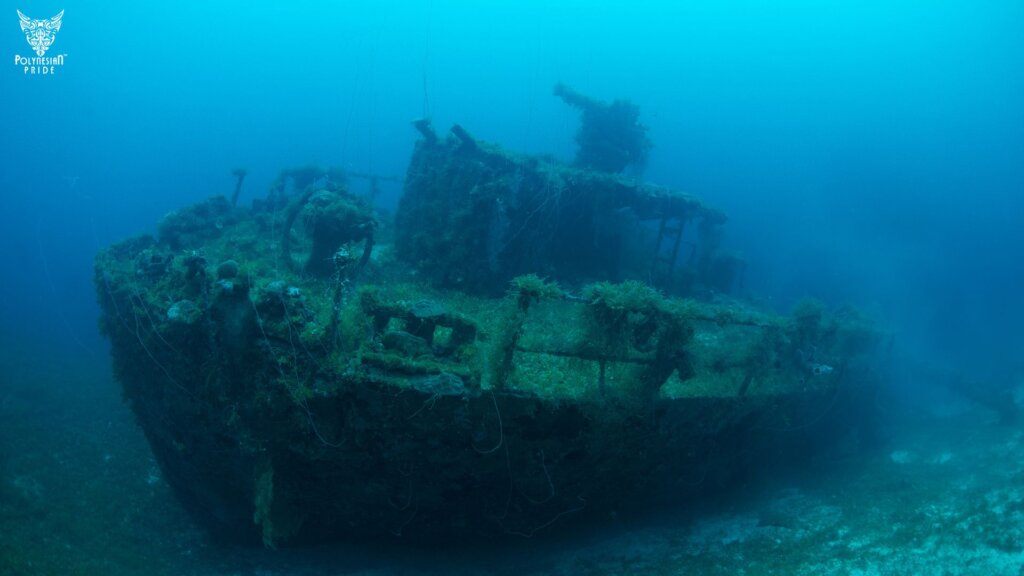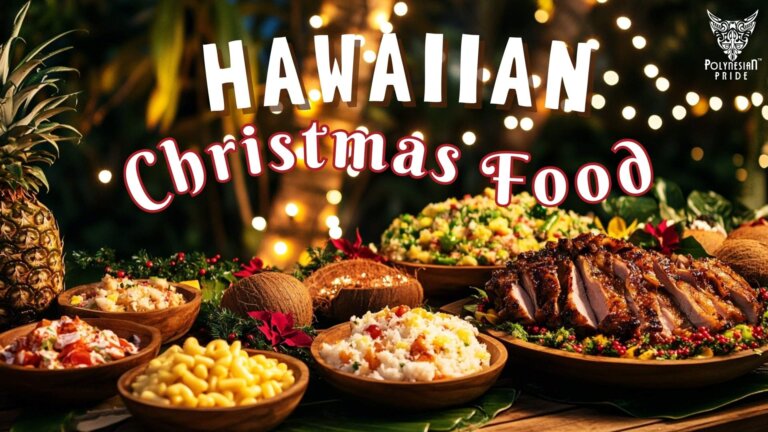8 Amazing Facts About The Federated States Of Micronesia

INTRODUCTION
Nestled in the heart of the vast Pacific Ocean, the Federated States of Micronesia is a captivating archipelago of over 600 islands scattered across a sprawling reach of turquoise waters. This micro-nation offers a fascinating blend of vibrant culture, breathtaking natural beauty, and a rich history that resonates with the echoes of colonization and resilience. While this country might be small, it holds many extraordinary stories and astonishing natural wonders on its shores. Join us as we explore 08 awe-inspiring facts about the Federated States of Micronesia.
08. Micronesia has The World’s Largest Crab
One of the standout facts about the Federated States of Micronesia’s biodiversity is the presence of the coconut crab (Birgus latro), the world’s largest land-dwelling arthropod. Coconut crabs are known for their impressive size and strength; they are also integral to the island’s ecosystem and culture.
The Remarkable Coconut Crab
Coconut crabs can boast a leg span of up to 3 feet (0.91 meters) and a weight reaching 9 pounds (4.1 kg), making them giants among arthropods. Their powerful claws, capable of exerting up to 3,300 newtons of force, are strong enough to crack open coconuts—hence their name. Sporting vibrant hues ranging from purplish-blue to orange-red, coconut crabs are as visually striking as they are impressive.

Habitat and Behavior
Coconut crabs are native to various Indo-Pacific islands, including several in Micronesia. They thrive in tropical environments with access to land and sea, often found in coastal forests and rocky shores. These nocturnal creatures are skilled climbers, using their claws to scale trees in search of food, with a fondness for coconuts. Their ability to crack coconuts is crucial in dispersing coconut palm seeds. Notably, coconut crabs have an acute sense of smell, which they use to locate food and potential mates, sometimes leading them into human settlements.
The Delicacy of Coconut Crabs
Tasting coconut crabs is a must-try thing to do in the Federated States of Micronesia. Their sweet, tender meat has a hint of coconut flavor and is sometimes considered an aphrodisiac. However, intensive hunting has made them rare on islands with human populations, threatening their survival. Locals catch these crabs at night with a flashlight near coconut tree groves. To see one, step on its back and grab from behind to avoid the front claws. Once caught, they hang them from a tree or roof for storage or freeze them for longer preservation.
These crabs are not only a testament to nature’s wonders but also a critical part of the cultural and ecological tapestry of the islands. Exploring the coconut crab provides a deeper appreciation of the facts about the Federated States of Micronesia and its natural heritage.

07. Yap’s Stone Money is A Unique Cultural Treasure
Yap’s stone money, or rai, is another fascinating fact about the Federated States of Micronesia’s culture. This distinctive form of currency has intrigued anthropologists, economists, and visitors for centuries, reflecting the ingenuity and cultural values of the Yapese people.
The Origins and Nature of Rai
Rai consists of large, circular stone discs with a central hole, ranging from a few inches to 12 feet (3.66 meters) in diameter and weighing several tons. Made from limestone quarried on Palau and other nearby islands, these stones were introduced to Yap by explorer Anagumang, who recognized their potential as money. The size, quality, and history of ownership determine the value of rai, with stones acquired at high cost or through notable events being particularly valuable.

Understanding Rai Stones
A unique aspect of rai is that these massive stones rarely move once placed. Ownership changes are recognized verbally and remembered communally, challenging modern money concepts. Even if people lost a stone at sea, its value remained intact due to its history. This system underscores the notion that money’s value comes from collective agreement rather than physical form.
Cultural Significance and Modern Use
Although rai is still used today for significant transactions such as dowry payments or land purchases, it is also employed in traditional ceremonies and exchanges, serving as symbols of heritage and identity. The Yapese government preserves and protects these stone monuments, attracting tourists to travel to the Federated States of Micronesia to witness this unique form of currency.

06. A Complex History Of Colonization
Successive waves of colonization profoundly shaped the Federated States of Micronesia’s history, each leaving its mark on the islands’ culture, society, and governance.
Spanish Influence: Early European Contact
The first significant European contact with Micronesia came in the 16th century when Portuguese navigator Diogo da Rocha, sailing for Spain, sighted the Caroline Islands. Spain began asserting control in the 19th century, focusing on religious conversion and establishing Catholic missions. Spanish influence introduced Catholicism and Spanish loanwords to Micronesian languages, blending with local traditions.

German Colonial Rule: Economic Ventures
From 1899 to 1914, German rule marked a period of economic development. The Germans encouraged copra production, introduced new crops, and initiated infrastructure projects. The German administration imposed new governance systems, disrupting traditional land tenure and introducing private land ownership. Despite these changes, traditional practices persisted alongside Western influences.
Japanese Occupation: War and Assimilation
From 1914 to 1945, the Japanese occupation brought strict assimilation policies and the use of Micronesia as a strategic military base. The Japanese enforced their language and customs, eroded traditional practices, and conscripted locals for labor. While the Japanese developed some infrastructure, it primarily served their interests.

American Administration: Transition to Independence
Post-World War II, the U.S. administered Micronesia under a U.N. trusteeship known as the Trust Territory of the Pacific Islands (TTPI). American rule brought modern infrastructure and educational opportunities, but also led to land alienation and social disruptions. The drive for self-determination grew, culminating in the establishment of the Federated States of Micronesia in 1986.
05. Most Micronesians are Christian
Dominant Faith: Christianity in Micronesia
Christianity, introduced by European missionaries during colonial times, is the main religion in the Federated States of Micronesia. It has shaped the culture, customs, and governance of the islands. The influence of Christianity is evident in daily life and social norms.
Historical Spread: Missionary Work
European explorers and missionaries, including Spanish, German, and American, introduced Christianity to Micronesia. Spanish Catholics were among the first to build churches and schools in the Caroline Islands. German Protestants followed, translating the Bible and adapting Christianity to local customs. American missionaries continued the work, expanding Christian communities across the islands.

Religious Diversity and Syncretism
Micronesia’s Christian landscape is diverse, with Catholicism, Protestantism, and other denominations coexisting. Many Micronesians blend Christian beliefs with traditional practices, creating a unique fusion of faith. People widely celebrate festivals like Christmas and Easter, reflecting their religious devotion and cultural traditions.
Influence on Society and Governance
Christian values have impacted Micronesian social norms and governance. Concepts of morality and justice from Christianity influence laws and community life. Churches are central to social activities and provide support for various needs. Christian leaders often guide personal and community decisions.
04. The Yapese Are Known For Their Traditional Dance
Traditional Dance Forms
Yapese dance is vital to culture, showcasing tradition, storytelling, and community spirit. During ceremonies and festivals, people perform traditional dances like the “Fayu” (men’s stick dance) and “Fanuwel” (women’s dance). These dances reflect Yapese values and historical narratives.

Contemporary Innovations
Modern Yapese dance blends traditional and contemporary styles. Young dancers incorporate hip-hop and urban elements, creating fresh performances that appeal to global audiences. Efforts to revive traditional dance among youth are helping preserve cultural heritage.
Cultural Significance
Dance in Yap is more than entertainment; it connects people to their ancestry and the natural world. It plays a crucial role in maintaining cultural practices and contributes to the local economy through festivals and tourism. Yapese dance is a vibrant expression of island life and tradition.
03. Pohnpei is The Second Wettest Place on Earth
Climate and Geography
Pohnpei, located in the western Pacific, is known for its heavy rainfall and lush landscapes. Its equatorial climate and mountainous terrain capture moisture, creating a verdant environment. The island experiences frequent rain but also has periods of sunshine, offering varied outdoor activities.

Biodiversity and Conservation
Pohnpei’s rainforests and marine environments are rich with unique species. The island’s commitment to conservation includes protecting its natural habitats and promoting sustainable practices. Initiatives support both environmental protection and community involvement.
Cultural Heritage
Pohnpei’s culture is deeply connected to its environment. Traditional practices like farming and fishing reflect a harmonious relationship with nature. Clan-based social structures and cultural rituals play a significant role in community life. Dance, music, and crafts are integral to preserving Pohnpeian heritage.
Pohnpei’s status as a rain-soaked paradise highlights its ecological and cultural richness. The island’s blend of natural beauty and traditional practices makes it a unique and vital part of Micronesia.
02. Chuuk Lagoon is A Maritime Museum of World War II Wrecks
Truk Lagoon, or Chuuk Lagoon, is a remote archipelago in the Federated States of Micronesia. It is renowned for its significant World War II history hidden beneath its tranquil waters.
Wartime Legacy: The Ghost Fleet of Chuuk Lagoon
Truk Lagoon was a crucial Japanese naval base and airfield during the war, making it a strategic target for Allied forces. In February 1944, Operation Hailstone—a major aerial and maritime assault—resulted in the sinking of over 60 ships and hundreds of aircraft in just a few days.
The submerged wrecks of Truk Lagoon are haunting reminders of the intense battles and human sacrifices of World War II. These vessels, which include warships, submarines, planes, and merchant ships, rest in varying depths from shallow reefs to deeper plains. Remarkably preserved due to minimal currents and abundant marine life, they have become an underwater museum of maritime warfare. Divers from around the world visit to explore these relics and honor those who lost their lives in the conflict.

A Glimpse Into The Past
The wrecks offer a glimpse into past naval warfare frozen in time. Encrusted with corals and marine life, they provide habitats for various sea creatures, including fish, turtles, and sharks. Artifacts like cannons, torpedoes, and personal items remain on board, each telling a story of courage and tragedy amidst the chaos of war.
Diving in Truk Lagoon is a unique experience. Its crystal-clear waters and calm conditions make it ideal for divers of all skill levels.

01. Kosrae is The Hidden Gem of Micronesia’s Pristine Waters
Kosrae, often called the “Jewel of Micronesia,” is a remote island in the eastern Caroline Islands, known for its lush rainforests, clear waters, and vibrant coral reefs. Its unspoiled environment makes it a paradise for nature lovers and eco-travelers seeking tranquility and authenticity.
Exploring Kosrae’s Underwater Wonderland
Kosrae’s most significant allure lies beneath its azure seas, where abundant marine life, coral gardens, and underwater landscapes await discovery. The island’s barrier reef is among the healthiest in the Pacific, hosting colorful fish, sea turtles, rays, and sharks. In Kosrae, dive sites feature walls, pinnacles, caves, and wrecks.
Kosrae’s marine environment extends to mangrove forests, seagrass beds, and deep trenches, supporting diverse habitats and species. Conservation efforts, marine protected areas, and sustainable practices help preserve these natural resources for future generations.

Embracing Kosrae’s Traditions
Kosrae’s culture is deeply connected to its natural surroundings, reflecting respect for land and sea. The Kosraeans, the island’s indigenous population, practice traditional customs and rituals that emphasize harmony with nature. Ceremonies like the “nahs” (spirit calling) and the “lukwe” (feast) celebrate life events and strengthen community bonds.
The art of navigation, canoe building, weaving, and storytelling are vital cultural practices. Visitors can engage in cultural exchanges, festivals, and educational programs to gain insight into Kosraean traditions and values.
Kosraean hospitality is renowned, with locals welcoming guests warmly. Homestays, village tours, and community events offer travelers opportunities to connect with local families, support small businesses, and contribute to sustainable tourism.

CONCLUSION
The Federated States of Micronesia is a treasure trove of wonders, from its sprawling islands and vibrant cultural traditions to its rich history and natural beauty. These facts about the Federated States of Micronesia reveal this destination’s unique and fascinating aspects. Whether you’re intrigued by Yapese stone money, captivated by Chuuk Lagoon’s underwater mysteries, or inspired by local festivals, the facts about the Federated States of Micronesia highlight a diverse and enriching experience. As you plan your next adventure or explore Pacific cultures, remember the hidden gems of Micronesia. Here, history, nature, and culture blend seamlessly to create a captivating story waiting for discovery. So pack your bags and let the journey begin!
FAQs
How Do The Yapese Use Stone Money Today?
The U.S. dollar is the common currency in Yap, one of the Federated States of Micronesia. However, stone money, known as Rai in Yapese, is still used for significant transactions such as dowry payments or land purchases. One of the fantastic facts about the Federated States of Micronesia’s stone money is that people did not quarry these gigantic stone discs on the island.
Why is Pohnpei notable for its climate?
Pohnpei is known as the second wettest place on Earth due to its equatorial climate and mountainous terrain that captures moisture. This heavy rainfall supports lush rainforests and a diverse range of plant and animal life, as noted in the facts about the Federated States of Micronesia.
What is the coconut crab, and why is it significant in Micronesia?
The coconut crab is the world’s largest land-dwelling arthropod, known for its impressive size and strength. The Federated States of Micronesia play a crucial role in the island ecosystem by cracking open coconuts and dispersing palm seeds. Additionally, it is a delicacy in Micronesia.
What makes Kosrae a unique destination in Micronesia?
Kosrae, often called the “Jewel of Micronesia,” is renowned for its pristine waters, vibrant coral reefs, and rich marine biodiversity. The facts about the Federated States of Micronesia emphasize its excellent diving opportunities, well-preserved natural environment, and traditional Kosraean culture.

I am Leilani Miller – I research focusing on Vanuatu – volcanic landscapes, blue holes, coral reefs & rainforests. I have over five years of experience researching and sharing insights on tourism and environmental activism. Explore and experience without limits through my latest article.
Contact information:
Email: [email protected]
Tel: +1 (808) 555-1528






